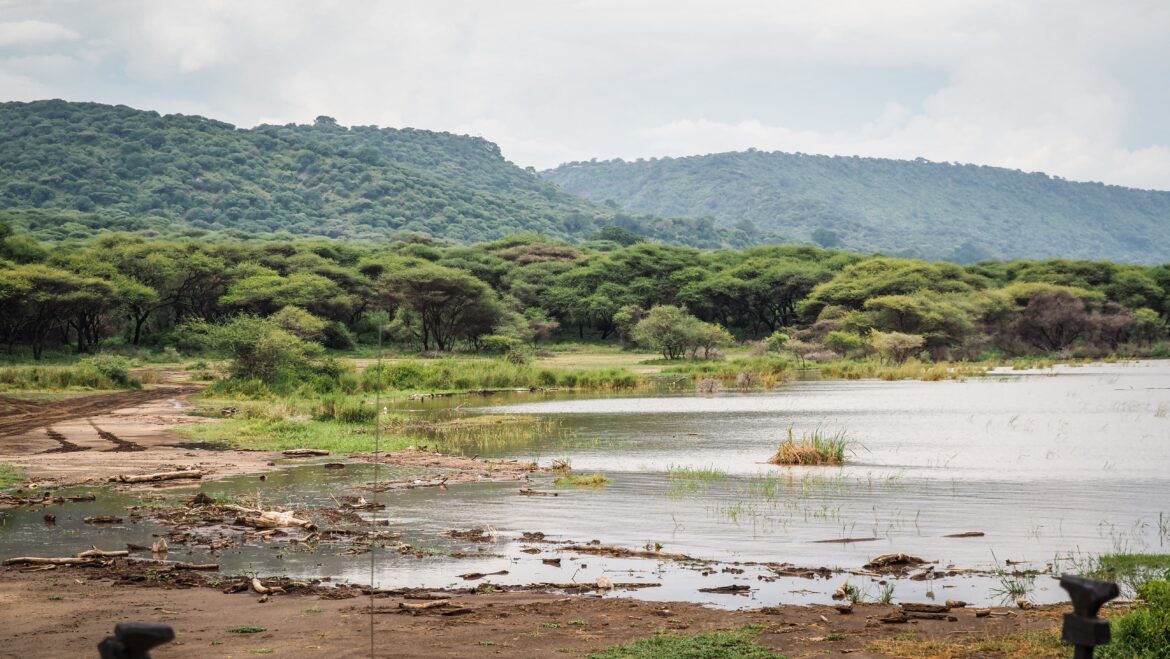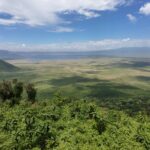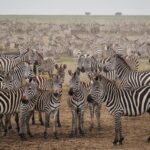Lake Manyara is a shallow, alkaline lake in northern Tanzania, located within the East African Rift Valley. It covers approximately 470 square kilometres and is part of Lake Manyara National Park, a UNESCO-designated biosphere reserve. The lake is known for its rich biodiversity, including large populations of flamingos, over 400 bird species, and a variety of wildlife such as elephants, hippos, giraffes, and the famous tree-climbing lions.
The lake’s name is believed to come from the Maasai word emanyara, referring to a spiky plant used to build protective enclosures around their homesteads. The surrounding park features diverse landscapes, including groundwater forests, savannas, and wetlands.
Visitors to Lake Manyara can enjoy game drives, birdwatching, canoeing (seasonal), and cultural experiences in the nearby town of Mto wa Mbu. The lake is also home to fish species like tilapia and catfish, with the endangered Oreochromis amphimelas endemic to the area.
How to get there?
Getting to Lake Manyara depends on your starting point, but the most common routes are from Arusha, which is the main gateway to northern Tanzania’s safari circuit.
By Road
From Arusha: The drive to Lake Manyara National Park takes about 2 to 2.5 hours (approximately 126 km). The road is well-paved up to the park gate, making it an easy drive.
From Kilimanjaro International Airport (JRO): If you’re arriving by international flight, it’s about 3-4 hours (170 km) by road to the park.
From Ngorongoro Crater or Serengeti: If you’re coming from the Ngorongoro Conservation Area, it’s about 1.5 to 2 hours (80 km) to Lake Manyara. From the Serengeti, the drive can take 4-6 hours, depending on your exact location in the park.
Self-drive vs. Tour Operator: While self-driving is possible, most visitors book a guided safari through a tour operator, which includes transport, park entry fees, and game drives.
By Air
Manyara Airstrip (Lake Manyara Airport): There are domestic flights from Arusha, Serengeti, or Kilimanjaro to the Manyara Airstrip, which is just outside the park. Airlines like Coastal Aviation, Air Excel, and Regional Air offer scheduled and chartered flights.
By Organized Safari
Book a private or group safari tour from Arusha or other nearby locations for minimal hassle. I booked mine with Travel Africa Safari Agency as part of a 6-day safari that included Tarangire, Ngorongoro, Serengeti, and Lake Manyara. Although some organizational aspects could be improved, it was a good quality-to-price ratio. They offer so-called joining safari, which is a great way to save money and meet new people.

The best time to visit
Best Overall Time: Dry Season (June – October)
Wildlife is easier to spot as animals gather around water sources, and the roads are in good condition. The weather is dry and sunny, with little to no rain. However, it is peak tourist season, so the park can be busier.
Best for Birdwatching & Lush Scenery: Wet Season (November – May)
Thousands of flamingos and migratory birds arrive, and the landscape is green and beautiful. Occasional rains, but mostly clear skies from January to February. Wildlife viewing is still good, though animals are more spread out. Fewer tourists, making for a quieter experience.
When to Avoid
March to May (Heavy rains): Roads can get muddy, and wildlife is harder to spot.
My experience
Lake Manyara was the last stop on my 6-day safari and maybe that was why I wasn’t so excited about what I saw. Serengeti and Ngorongoro set the bar so high that doing a game drive at the lake was quite unmemorable.
The morning was super rainy and a heavy thunderstorm delayed our departure from Ngedere Lodge quite a bit. Luckily, later during the day, the sky cleared up and the weather was beautiful.
Soon after we passed the entrance gate, we saw plenty of gibbons and even some blue monkeys. They were just hanging on the fallen trees, next to each other as it was quite a cold morning and it was still raining.
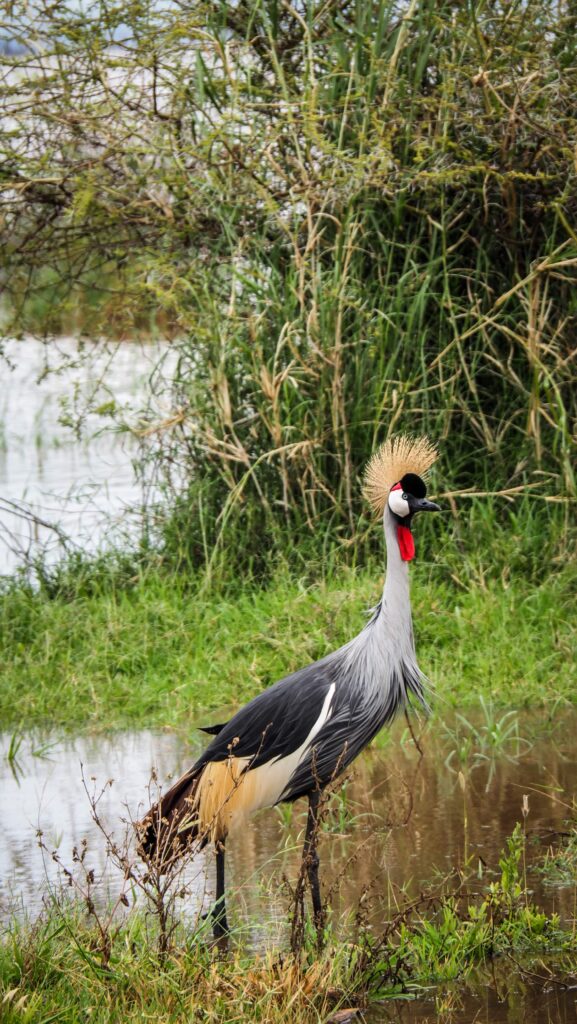
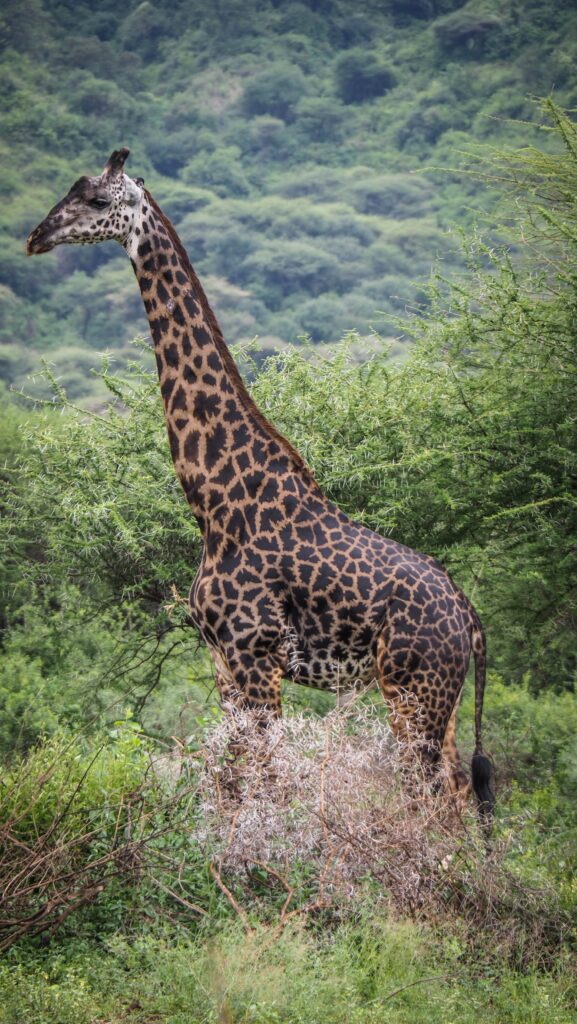
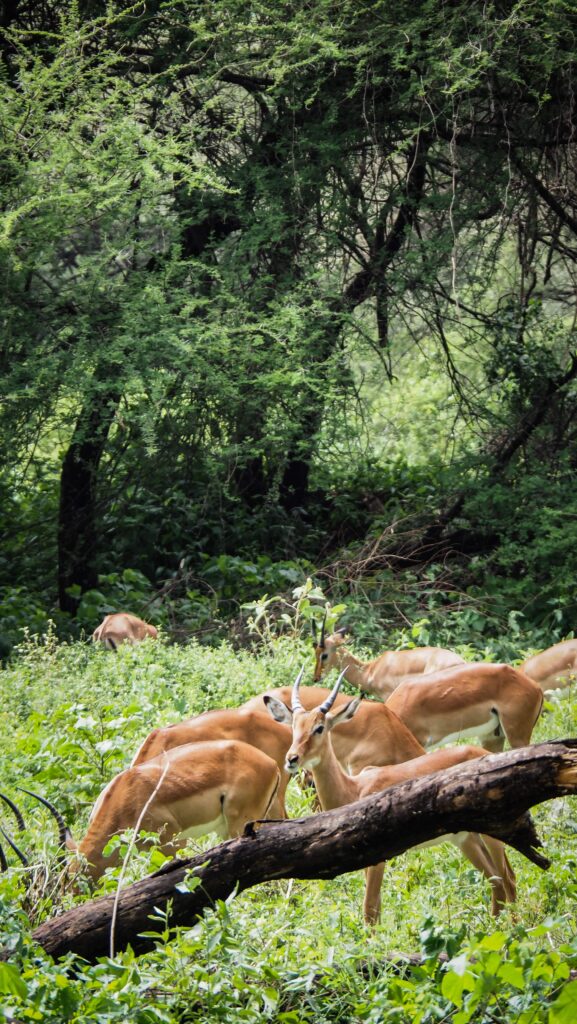
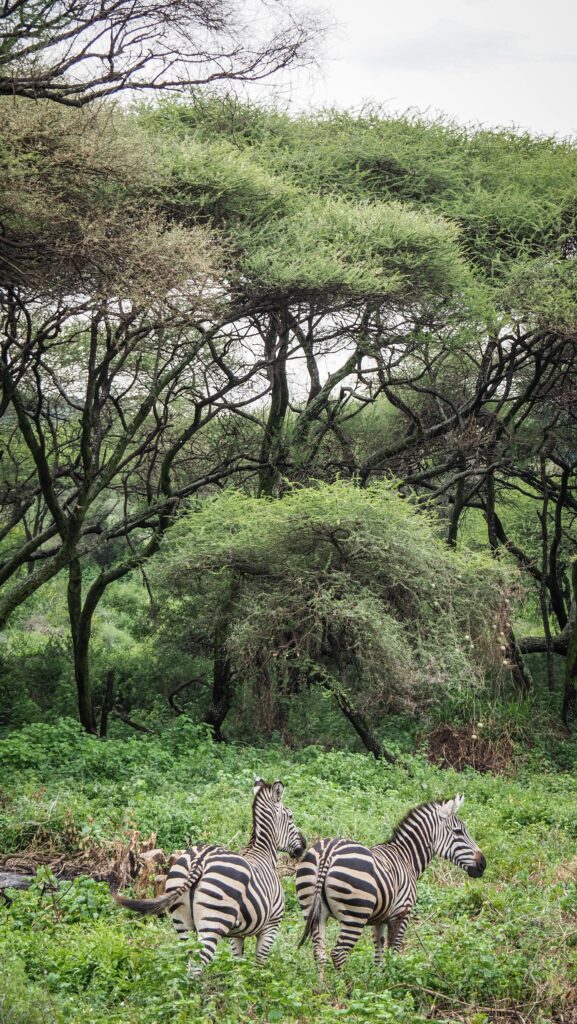
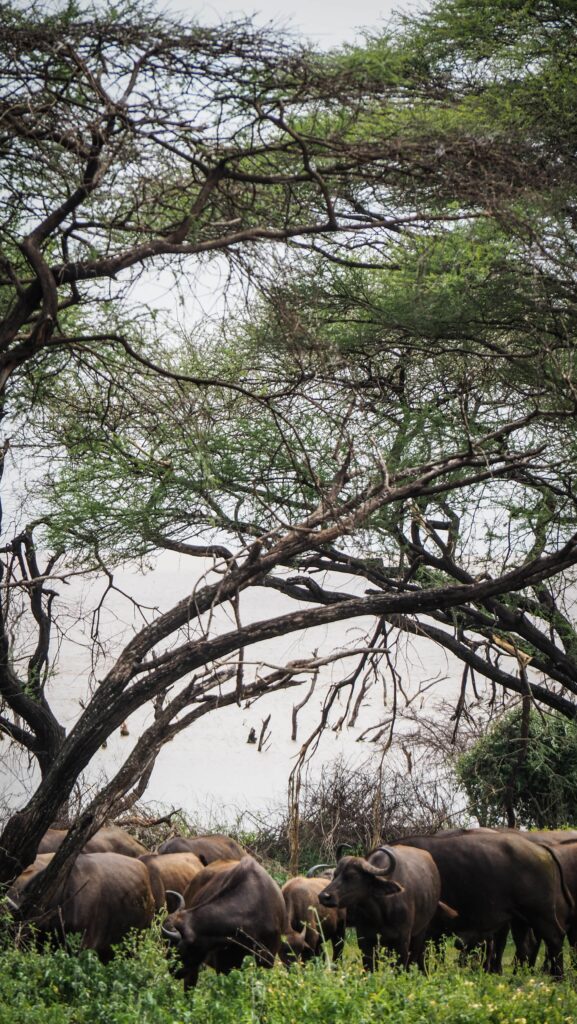
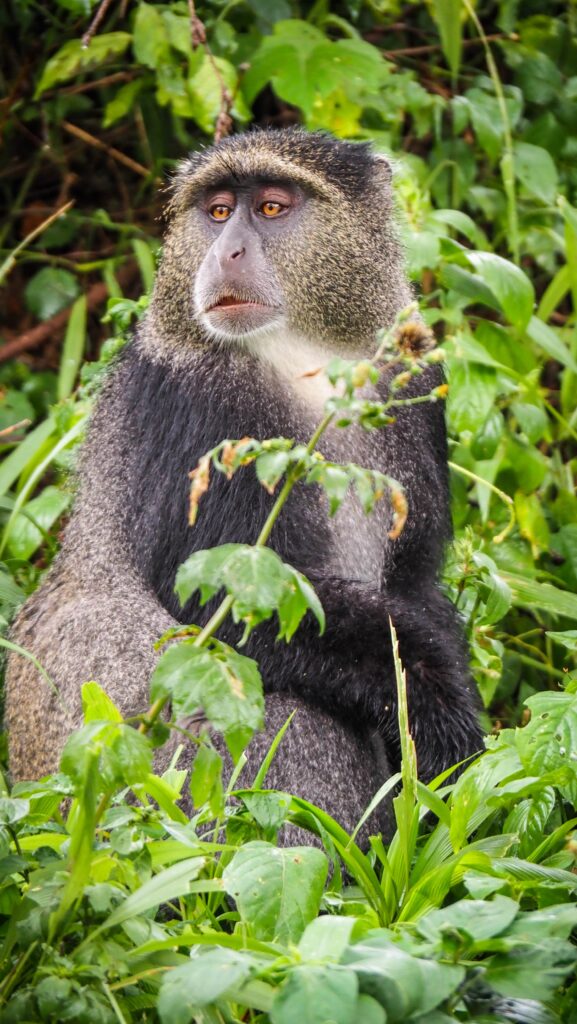
Blue monkeys are one of three primate species in the park, along with baboons and vervet monkeys. They are mainly olive or grey, with a dark face and a blackish cap, feet, and front legs. They have little hair on their face, which can sometimes make them appear blue.
Later on, we saw some giraffes, zebras and elephants, but compared to the scale of Serengeti or Ngorongoro, it was not that breathtaking. The park is quite overgrown so it’s difficult to spot animals in the bush. Nevertheless, it was cool to see a group of elephants simply walking on the main road.
After lunch, we drove down to the shore looking for lions that climb the trees and very often can be spotted chilling there but we weren’t lucky on the day and we didn’t see any.
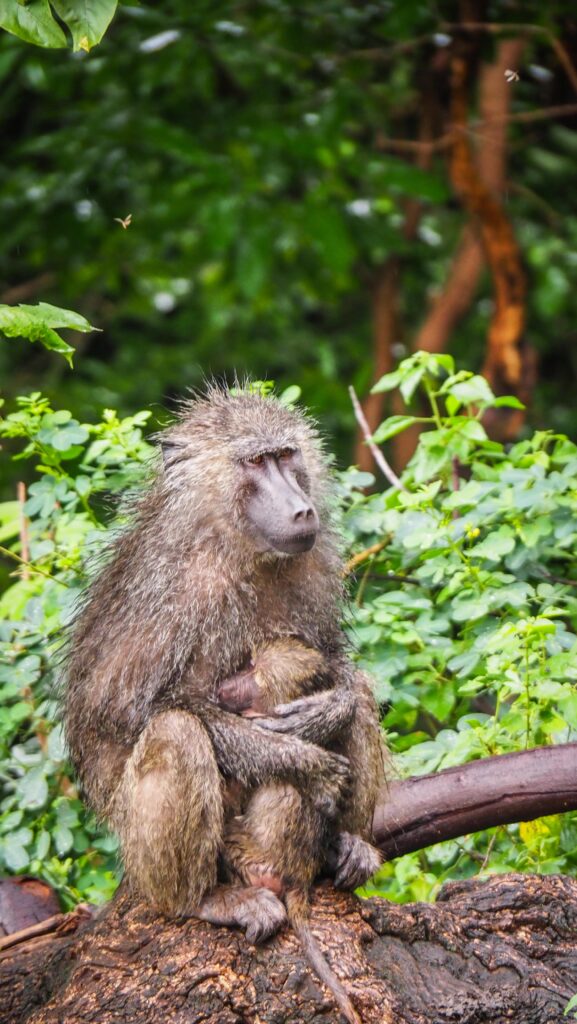
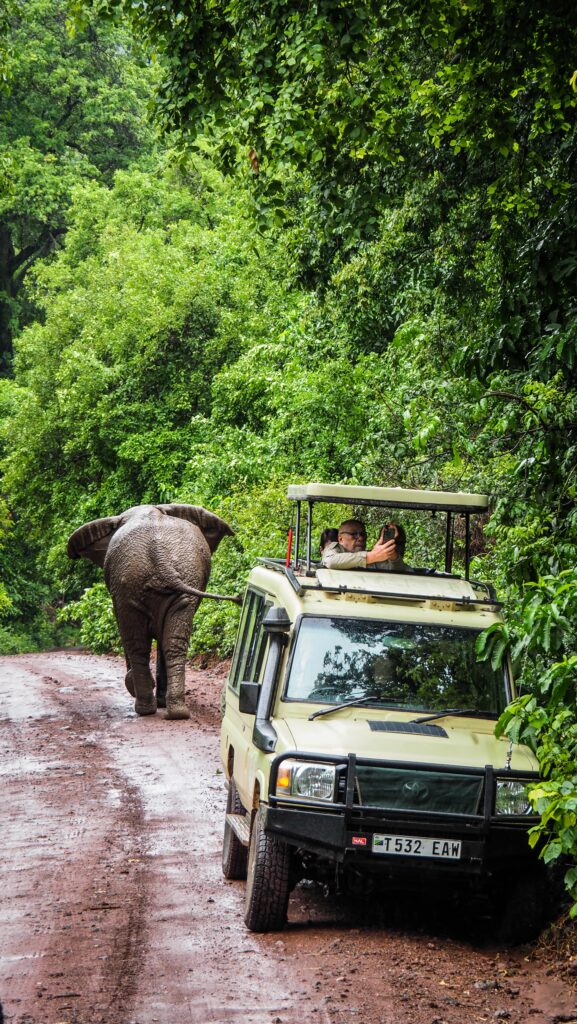
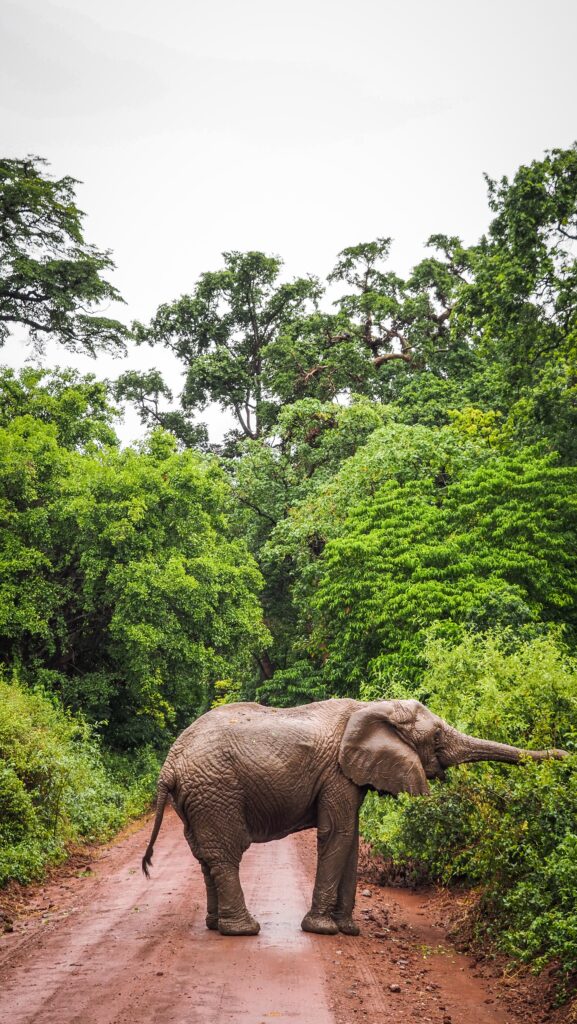
Lake Manyara is huge (470 square kilometres), and you can’t even see the other side of it. It doesn’t look as impressive from the shore as it does from the viewpoint located en route to Ngorongoro. There are many dead trees in the water – the result of the lake overflowing.
All in all, out of the places that were included in my safari trip: Serengeti, Ngorongoro, Tarangire and Lake Manyara, the last one was the least interesting and I would even say that it could be completely skipped. We didn’t see too many animals but on the other hand, maybe the perception would be different if it wasn’t the last place to visit, but the first.
Nearby places worth visiting
Ngorongoro Conservation Area
The Ngorongoro Conservation Area is a unique protected region in northern Tanzania, known for its diverse wildlife, stunning landscapes, and rich history. It is home to the Ngorongoro Crater, the world’s largest inactive, intact volcanic caldera, which supports many animals, including the Big Five: lions, elephants, buffaloes, leopards, and rhinos.
It’s about 1 – 2 hours drive from Lake Manyara to Ngorongoro Conservation Area. You will more information about this place in a separate post HERE.

Tarangire National Park
It is home to one of the largest elephant populations in Tanzania. You may also spot lions, leopards, cheetahs, giraffes, zebras, buffalo, wildebeest, and over 500 bird species.
Tarangire River is the park’s lifeline and attracts wildlife year-round. In the dry season (June–October), animals from surrounding areas migrate here for water.
The park’s landscape is known for its iconic baobab trees, also known as the “Tree of Life.” Other than that, you will experience rolling savannas, wetlands, and acacia woodlands.
It’s about 1.5 – 2 hours drive from Lake Manyara to Tarangire National Park. You will more information about this place in a separate post HERE.


